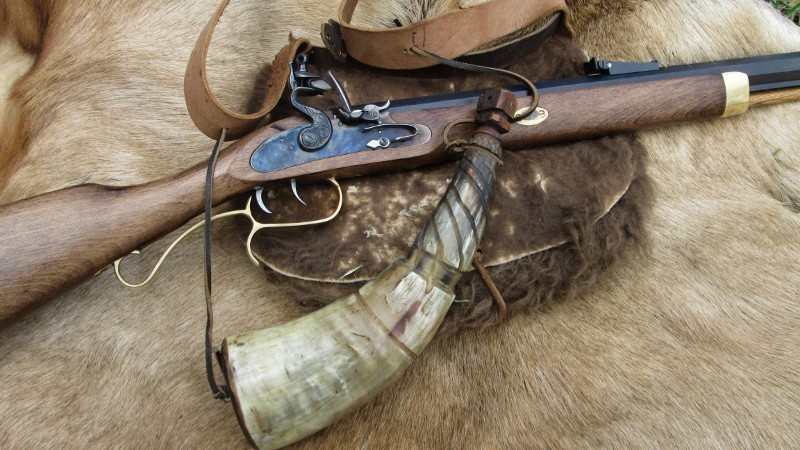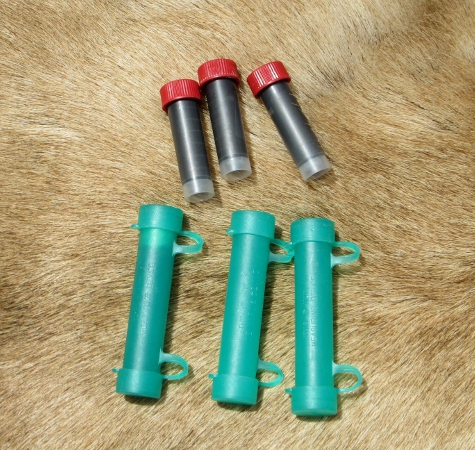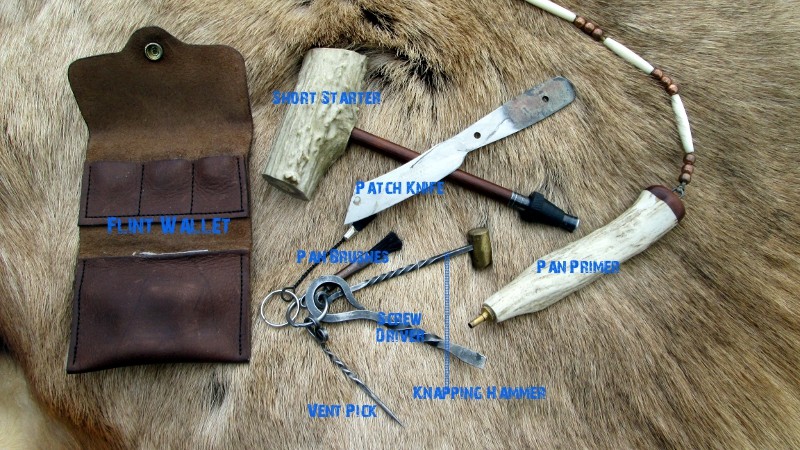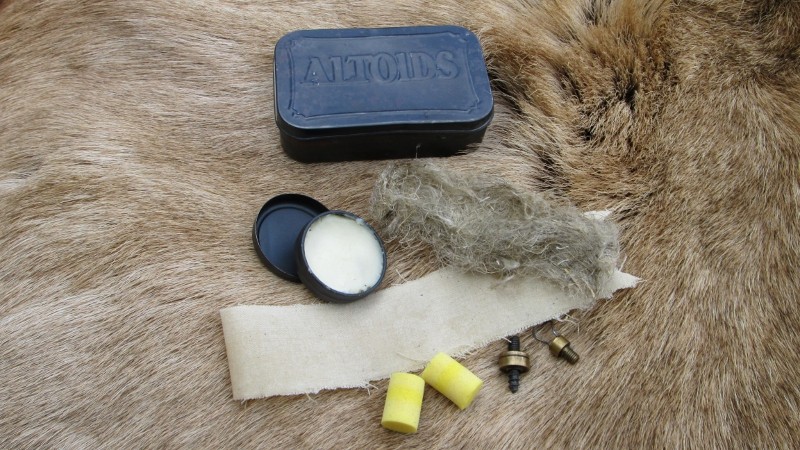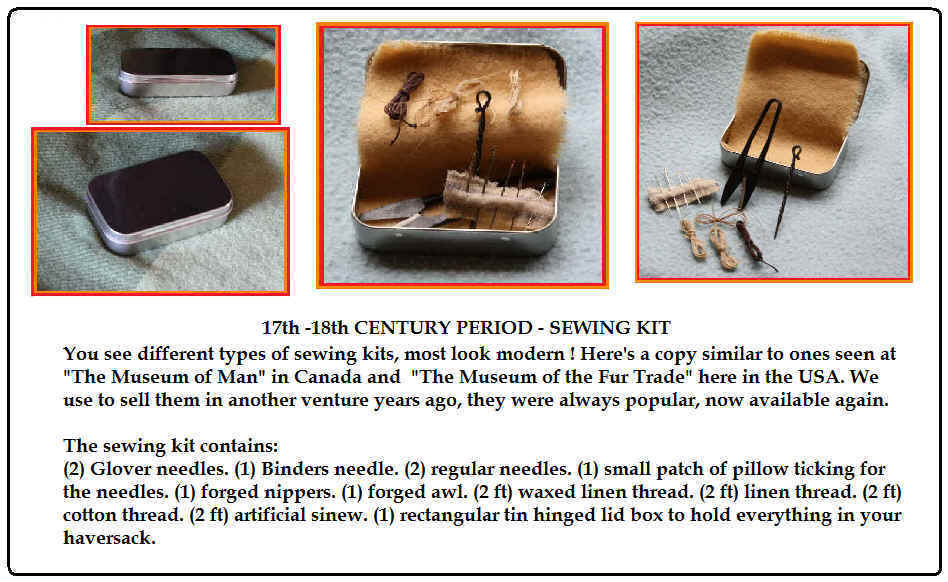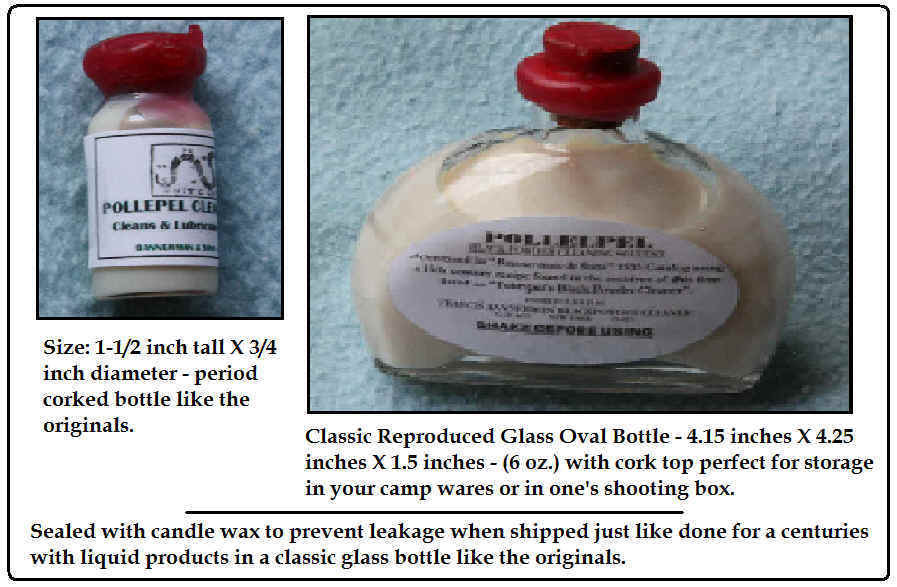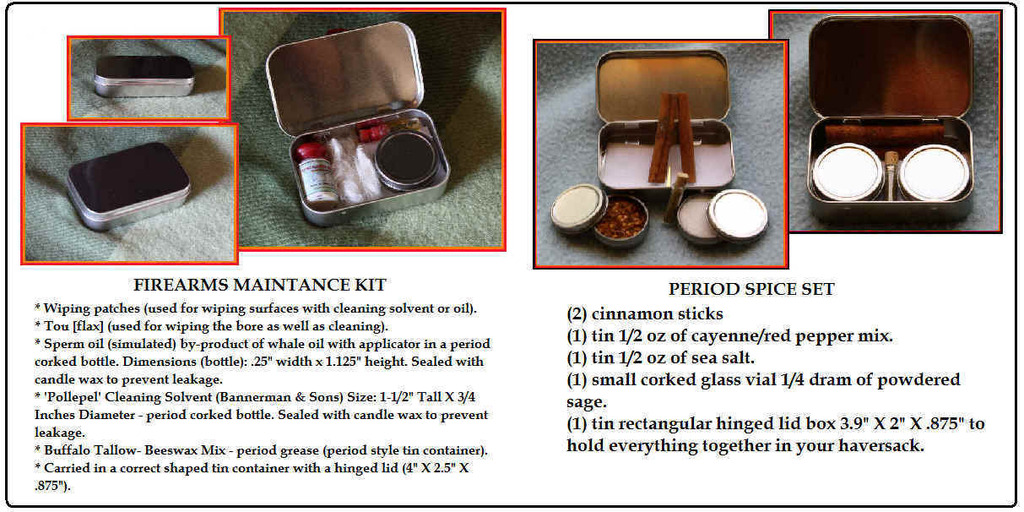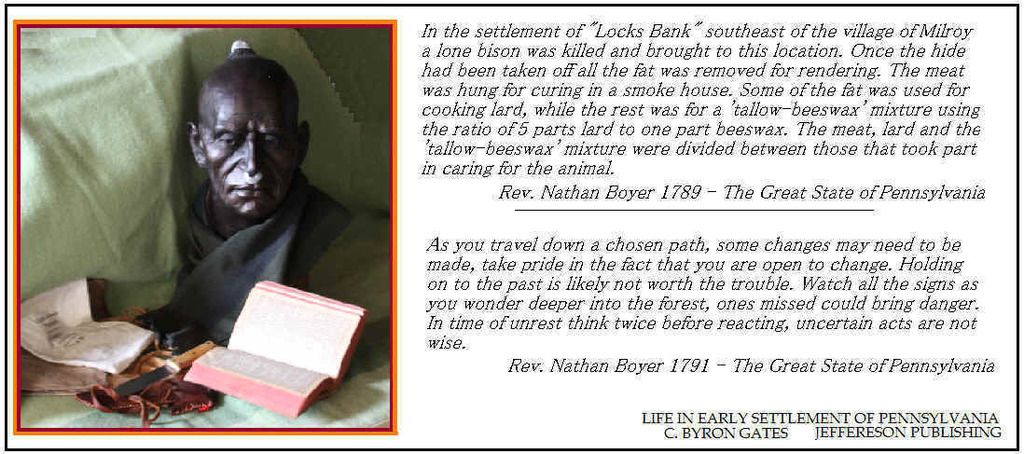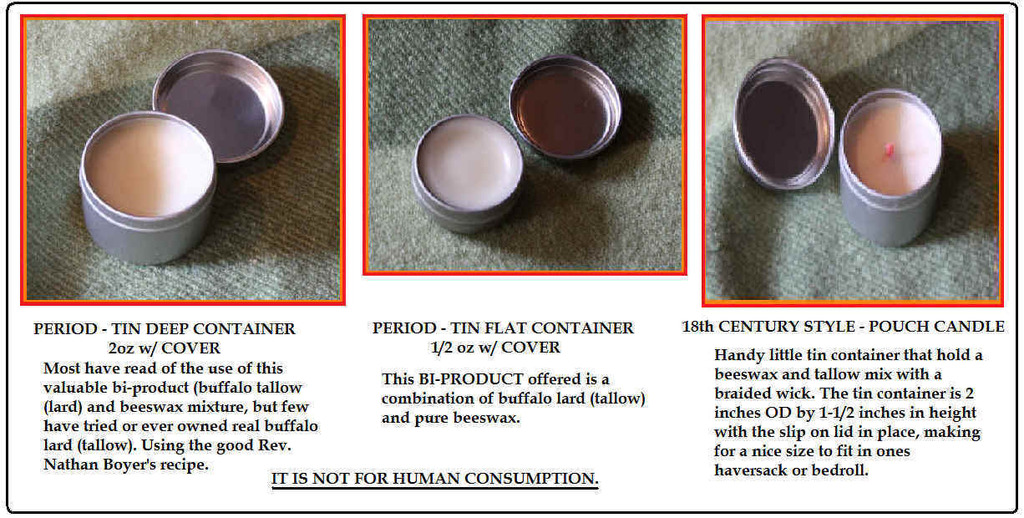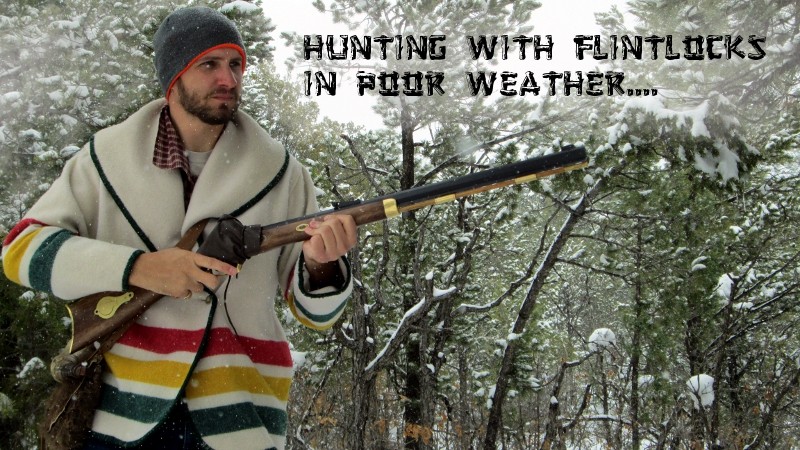
Flintlocks & Poor Weather
This is and always will be a touchy subject to the die hard flint lock hunter. Any time you talk flintlocks with a croud, you will hear the typical, Flintlocks in snow! No way, its hard enough to get them to fire when its dry out, you are just asking for tag soup.
Tag soup, is of course, where you draw your big game tag, go hunting and come home with nothing but sore legs, a stiff back and not one piece of meat to show for all the effort you put into your hunt. Tag soup keeps you warm on a cold winter day while you sit out a snow storm and reflect back to that hunt and how you got skunked.
Some like to make a big issue over flintlock's in poor weather. Die hard fans go to the most extreme to make sure everything is just right, but in the end, it boils down to plain common sense and a little ingenuity.
What causes a Flintlock to be so unreliable in poor weather conditions?
Flash Powder: What is flash powder? Flash powder, or more commonly called, Pan Powder, is typically 4fg grade black powder, that is super fine and ignites very rapidy, setting off the rifles main charge.
Pan Powder should be used strictly as just that! Never load the barrel with 4fg powder due to the high pressures it builds up.
Pan Powder in poor conditions ( Snow - Rain ) LOVES to suck up moisture like a sponge and turns to goop in as little as an hour, depending on moisture levels in the air.
While hunting hogs for the first time in Oklahoma with a friend and family, I used my brand new flintlock, which I had received only 6 days prior to my hunt.
On the first real day of the hunt, I was sitting in a 13' tall ladder stand and with the fog and a amount of mist in the air, I changed my pan powder Four times due to the moisture in the air causing the 4fg Goex powder to turn soft and gooey.
After the second time of changing pan charges, it got to the point, that it was so bad, I had to go through my possibles bag and take an Alchol swab packet and wipe down the pan, frizzen and flint because they were completely wet with dew.
Once I re-primed, I took that alcohol swap and wrapped it around both the flint and frizzen to help keep moisture out. It worked extremely well, until the swab eventually dried out.
Keep half a dozen Alcohol Swab packets on you at all times while hunting! They do a very fast job at removing moisture from the pan, flint and frizzen.
Part Two
Part Two
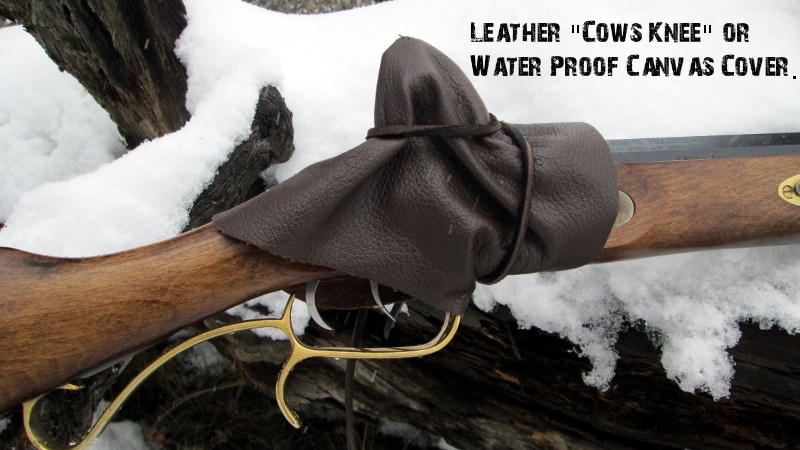
Covering your Frizzen/Pan
A pan cover is designed to cover the entire lock and protect it from the elements. This item is typically referred to as a "Cows Knee" and is a semi-round piece of leather or waterproof Canvas that wraps around the lock/stock and has a long piece of leather thong to wrap around and hold it in place tightly.
When attaching the cows knee, I like to make sure my leather thong wraps around behind the Flint Cock and in front of the Frizzen to ensure the cover does not work up while hiking, exposing my Lock mechanism.
This is one item I did NOT have with me on my hog hunt and if I had had it, it would have made a big difference and would have cut down on a lot of the moisture problems I had encountered during that hunt.
Think of the cows knee as a rain coat. Its water proof, it sheds water/snow away, it keeps you dry.
If you are a Flintlock Hunter/Shooter, this is one MUST HAVE item to carry in your possibles bag at all times! Those blue skies can quickly turn foul as soon as your back is turned and you are hiking up the mountains through thick timber. Also think of the trees, plants, that are can be covered in dew as the night turns to day light and the plants are covered with a dewy mist that ALWAYS finds a way to drip down our neck as we walk past that cedar tree.
Hunting with the Cows Knee:
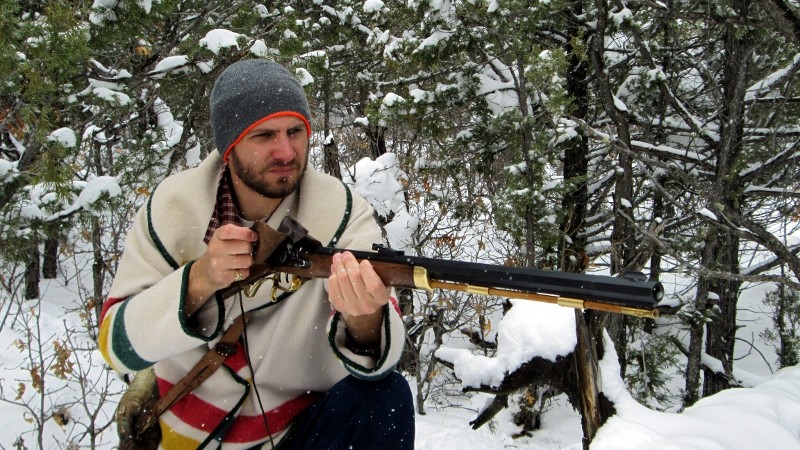
A pan cover is designed to cover the entire lock and protect it from the elements. This item is typically referred to as a "Cows Knee" and is a semi-round piece of leather or waterproof Canvas that wraps around the lock/stock and has a long piece of leather thong to wrap around and hold it in place tightly.
When attaching the cows knee, I like to make sure my leather thong wraps around behind the Flint Cock and in front of the Frizzen to ensure the cover does not work up while hiking, exposing my Lock mechanism.
This is one item I did NOT have with me on my hog hunt and if I had had it, it would have made a big difference and would have cut down on a lot of the moisture problems I had encountered during that hunt.
Think of the cows knee as a rain coat. Its water proof, it sheds water/snow away, it keeps you dry.
If you are a Flintlock Hunter/Shooter, this is one MUST HAVE item to carry in your possibles bag at all times! Those blue skies can quickly turn foul as soon as your back is turned and you are hiking up the mountains through thick timber. Also think of the trees, plants, that are can be covered in dew as the night turns to day light and the plants are covered with a dewy mist that ALWAYS finds a way to drip down our neck as we walk past that cedar tree.
Hunting with the Cows Knee:

It seems crazy to be hunting with a piece of leather that limits how quickly you can engage the game you are hunting.
While hunting with the cows knee in place, I normally leave it loosely tied into place or not tied at all. Still hunting with the cows knee isn't difficult, but when taken by surprise, it can come as an adrenaline rush, trying to untie it and get ready for the shot.
When I am watching a field or water hole, the cows knees is just draped over the lock, easily removed at a moments notice. This can also be done while slowly stalking through the mountains as long as the hunter pays attention and holds the cows knee in place.
The Unknowns:
Yes, we have the "Unknowns" to worry about as well!
What are these Unknowns?
How does the lubricant that I applied to the internals of my lock perform when Cold weather hits? Will it gum/thicken, causing my locks "Fly" to stick, causing the lock to not engage full cock( ready to fire postion)?
Will the lubricant that I applied to the Frizzen Spring, freeze, gum/thicken, causing the frizzen to fail to fully open?
How will the lubricant that I applied to the barrel and metal parts perform under wet/cold conditions?
What can I do to prevent Rain/Snow from entering the bore? Most commonly, a Finger cot, balloon, Muzzle Cot is slipped over the end of the barrel and does a good job. Remember that these are very thin and made of latex which rips very easily. My personal way of carrying a rifle in wet weather is cradled in my arms and pointed at a slight toward angle.
Its basically simple techniques to keep your flintlock dry and reliable in all weather conditions.
Cows Knee
Alcohol Swabs
Rag to mop up dew
Barrel pointed slightly downward
Light grade lubricant inside and outside of the lock
Wax the stock channel & lock in-letting to prevent wood swelling
Plug touch hole with Tooth Pick to help seal out moisture that may contaminate main powder charge while in camp
Extreme Flintlock Shooters/Hunters,
Have been known to seal around the pan with beeswax to prevent water from seeping into the pan, ruining the pan charge. This is a great extra step to prevent your powder from becoming contaminated.
NEVER! melt the beeswax and pour it around the frizzen. Allow it to gum up and then apply it by hand as thin as possible.
MORE TO COME
While hunting with the cows knee in place, I normally leave it loosely tied into place or not tied at all. Still hunting with the cows knee isn't difficult, but when taken by surprise, it can come as an adrenaline rush, trying to untie it and get ready for the shot.
When I am watching a field or water hole, the cows knees is just draped over the lock, easily removed at a moments notice. This can also be done while slowly stalking through the mountains as long as the hunter pays attention and holds the cows knee in place.
The Unknowns:
Yes, we have the "Unknowns" to worry about as well!
What are these Unknowns?
How does the lubricant that I applied to the internals of my lock perform when Cold weather hits? Will it gum/thicken, causing my locks "Fly" to stick, causing the lock to not engage full cock( ready to fire postion)?
Will the lubricant that I applied to the Frizzen Spring, freeze, gum/thicken, causing the frizzen to fail to fully open?
How will the lubricant that I applied to the barrel and metal parts perform under wet/cold conditions?
What can I do to prevent Rain/Snow from entering the bore? Most commonly, a Finger cot, balloon, Muzzle Cot is slipped over the end of the barrel and does a good job. Remember that these are very thin and made of latex which rips very easily. My personal way of carrying a rifle in wet weather is cradled in my arms and pointed at a slight toward angle.
Its basically simple techniques to keep your flintlock dry and reliable in all weather conditions.
Cows Knee
Alcohol Swabs
Rag to mop up dew
Barrel pointed slightly downward
Light grade lubricant inside and outside of the lock
Wax the stock channel & lock in-letting to prevent wood swelling
Plug touch hole with Tooth Pick to help seal out moisture that may contaminate main powder charge while in camp
Extreme Flintlock Shooters/Hunters,
Have been known to seal around the pan with beeswax to prevent water from seeping into the pan, ruining the pan charge. This is a great extra step to prevent your powder from becoming contaminated.
NEVER! melt the beeswax and pour it around the frizzen. Allow it to gum up and then apply it by hand as thin as possible.
MORE TO COME





